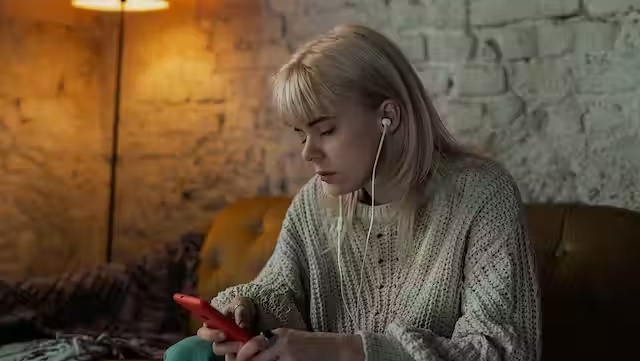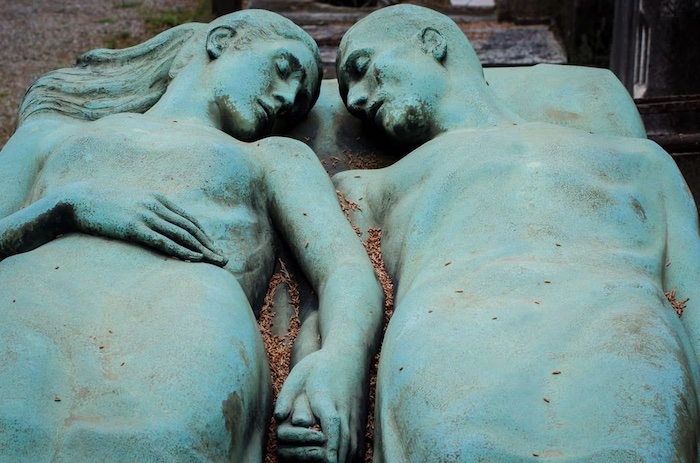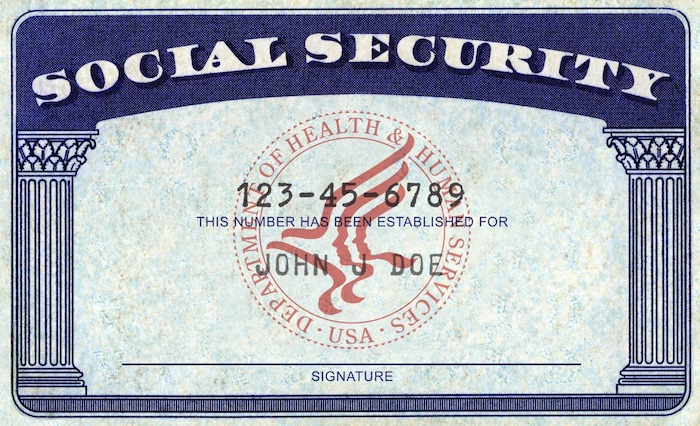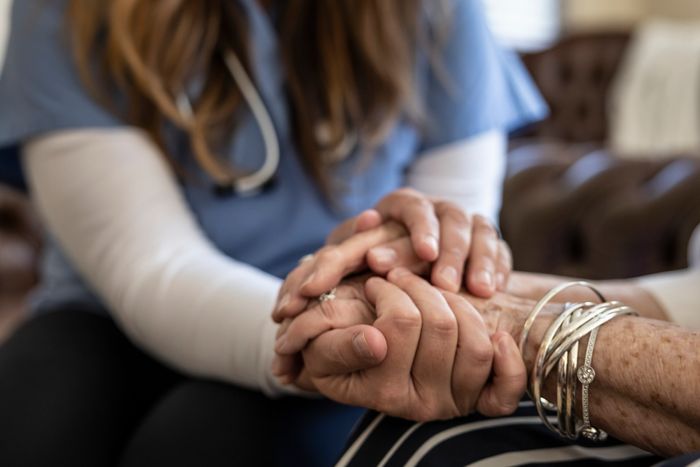— New research shows surprising activity levels in dying brains and may help explain the sudden clarity many people with dementia experience near death

Long the fixation of religions, philosophy and literature the world over, the conscious experience of dying has recently received increasingly significant attention from science. This comes as medical advances extend the ability to keep the body alive, steadily prying open a window into the ultimate locked room: the last living moments of a human mind.
“Around 1959 humans discovered a method to restart the heart in people who would have died, and we called this CPR,” says Sam Parnia, a critical care physician at NYU Langone Health. Parnia has studied people’s recollections after being revived from cardiac arrest—phenomena that he refers to as “recalled experiences surrounding death.” Before CPR techniques were developed, cardiac arrest was basically synonymous with death. But now doctors can revive some people up to 20 minutes or more after their heart has stopped beating. Furthermore, Parnia says, many brain cells remain somewhat intact for hours to days postmortem—challenging our notions of a rigid boundary between life and death.
Advancements in medical technology and neuroscience, as well as shifts in researchers’ perspectives, are revolutionizing our understanding of the dying process. Research over the past decade has demonstrated a surge in brain activity in human and animal subjects undergoing cardiac arrest. Meanwhile large surveys are documenting the seemingly inexplicable periods of lucidity that hospice workers and grieving families often report witnessing in people with dementia who are dying. Poet Dylan Thomas famously admonished his readers, “Do not go gentle into that good night. Rage, rage against the dying of the light.” But as more resources are devoted to the study of death, it is becoming increasingly clear that dying is not the simple dimming of one’s internal light of awareness but rather an incredibly active process in the brain.
What is terminal lucidity?
For decades, researchers, hospice caregivers and stunned family members have watched with awe as people with Alzheimer’s or other forms of dementia suddenly regain their memories and personalities just before death. To their family members it might seem like a second lease on life, but for many experienced medical workers, it can be a sign the end is near. Christopher Kerr, chief executive officer and chief medical officer at the Center for Hospice and Palliative Care in Buffalo, N.Y., has studied the lucid visions of several hundred terminally ill people. He says these events “usually occur in the last few days of life.” Such “terminal lucidity” is defined as the unexpected return of cognitive faculties such as speech and “connectedness” with other people, according to George Mason University’s Andrew Peterson, a researcher of bioethics and consciousness who co-authored a study of the phenomenon commissioned by the National Institutes of Health.
This connectedness goes beyond the return of lost communication ability and situational awareness. “One thing that seems to be quite profound for family members who observe lucidity is something we call the ‘old self’ emerging,” Peterson says. “There seems to be clear evidence that they’re aware not merely of their surroundings … but additionally understanding what their relationships to other people are”—be it the use of a nickname or a reference to a longstanding inside joke.
As surprising as these events might seem, they are quite common. “Our study wasn’t a prevalence study,” says Jason Karlawish, a gerontologist at the Penn Memory Center and senior principal investigator of the NIH study. Nevertheless, he adds, “what we found is lucidity was more common than it was the exception in dementia patients, which would suggest that the idea of it being terminal is not entirely correct.” Instead he suggests that episodes of lucidity should be seen as part of the “disease experience” rather than as aberrant events. “We’ve actually found that a variety of these episodes occurred months, even years, before the person died,” Karlawish notes. Even so, many experts including Kerr and Parnia agree that most of these episodes are associated with the approach of death. “It’s almost like they’re preparing themselves to die,” Parnia says.
The potential implications of these widespread, temporary cognitive resurgences are profound. “It suggests there may be neural networks that are remaining, and/or pathways and neural function, that could help potentially restore cognitive abilities to individuals we otherwise think are permanently impaired,” Peterson says.
Nevertheless, research into this phenomenon is still in its early phases. “We don’t actually know what’s going on in the brain during the dying process that may in some way connect to these episodes,” Peterson says. Despite this uncertainty, other research into brain activity near or at the time of death could provide scientists and clinicians greater insight into some of the processes occurring in the diseased and dying brain.
What happens in the brain as people die?
In a study published in Proceedings of the National Academy of Sciences USA in May, researchers at the University of Michigan observed a surge of organized brain activity in two out of four comatose people who were undergoing cardiac arrest after being removed from life support. This work built on more than a decade of animal research, including a 2013 PNAS study that revealed a similar surge in synchronized brain activity in rats exposed to a cardiac toxin and a 2015 study in which rats were killed by asphyxiation. In all of these investigations, the researchers found that gamma-wave activity surged within the first few minutes of cardiac arrest and then ceased. Gamma waves are a frequency of brain wave typically associated with wakefulness, alertness and memory recall.
Jimo Borjigin, a neurologist and an associate professor of molecular and integrative physiology at the University of Michigan, was involved in all three studies. The surge of gamma waves in dying subjects was particularly intense in a brain region Borjigin refers to as the “posterior cortical ‘hot zone,’” located near the back of the skull. Some other researchers believe this region may also be essential to conscious experience. The parts of the brain in this area are related to visual, auditory and motion perception—a phenomenon Borjigin believes is involved in the out-of-body experiences reported by people who come close to death and recover. She adds that gamma-wave activation patterns akin to those observed in the comatose people are associated with activities that include the recognition of a familiar image—such as a human face—in healthy people.
In both the human and animal studies, the subjects’ brain showed a spike in activity after the sudden reduction of oxygen supply, Borjigin says. “It starts to activate this homeostatic mechanism to get oxygen back, either by breathing harder or making your heart beat faster,” she adds. Borjigin hypothesizes that much of the surge in more complex brain activity observed in humans and animals undergoing cardiac arrest is also a result of the brain attempting to reestablish homeostasis, or biological equilibrium, after detecting a lack of oxygen. She further speculates that these survival mechanisms may be involved in other changes in cognition surrounding death. “I believe dementia patients’ terminal lucidity may be due to these kinds of last-ditch efforts of the brain” to preserve itself as physiological systems fail, Borjigin says.
NYU Langone’s Parnia agrees that the brain’s reaction to the loss of oxygen is at least partially responsible for lucid experiences surrounding death. Between 2017 and 2020 Parnia led a study called AWARE II, in which researchers monitored the brain activity of more than 500 critically ill people in the U.S. and U.K. who were receiving CPR. The patients were exposed to audiovisual stimuli while undergoing CPR to test their memory of events after cardiac arrest. Those who survived were later interviewed about how aware they were during the resuscitation process. According to Parnia, one in five survivors reported lucid experiences that occurred after their heart stopped. The AWARE II team also observed an unexpected spike in brain activity during CPR, he says. “Within 20 seconds of cardiac arrest, the brain flatlines,” Parnia says. Yet “usually within five minutes—but it could be longer—we’re seeing a reemergence of a transient period of brain electricity.” He adds that the frequencies of brain activity observed are similar to those associated with conscious experience.
Parnia believes the dying brain loses the usual suppression mechanisms that allow us to focus on individual tasks during our day-to-day lives. “When you die, your brain is deprived of oxygen and nutrients, so it shuts down,” Parnia says. “This shutting down process takes away the brakes…, and suddenly what seems to be happening is: it gives you access to parts of your brain that you normally can’t access…. All your thoughts or your memories or your interactions with everyone else come out.” But he stresses that the experiences of people undergoing cardiac arrest are lucid, not merely hallucinations. “They’re not delusional,” Parnia says of the resuscitated people he studied, and what they’re experiencing is “not dreams or hallucinations.” Although his previous studies focused on resuscitated critically ill people, Parnia believes that terminal lucidity in people who are comatose or have dementia may be the product of a similar process. He is currently participating in a study on the latter phenomenon.
A full explanation for the conscious experiences of dying people remains elusive. But research increasingly paints a picture of death as an incredibly active and complex process—and, perhaps more importantly, “a humanized one,” as Kerr describes it. As for people with dementia, Karlawish says that rather than assuming their consciousness has been irrevocably changed, “we should still pay close attention to their mind because some aspects are still there, though they may be quite damaged.”
Complete Article ↪HERE↩!






